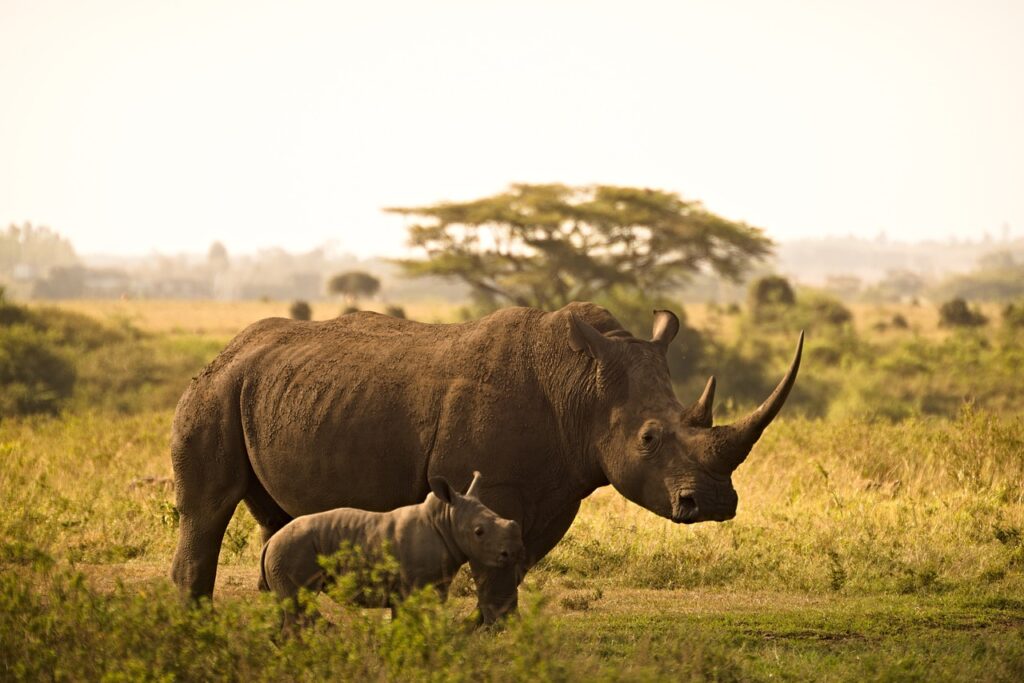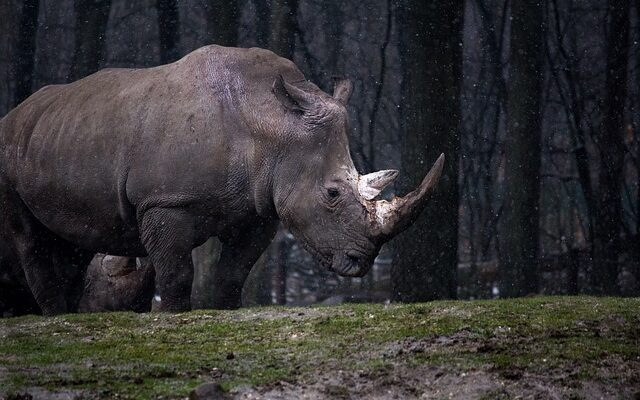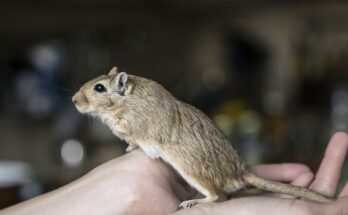Introduction:
Rhinos look very similar to dinosaurs, especially the Triceratops. Have you ever seen replica dinosaurs in a museum or zoo? They have leathery skin, and broad legs and most have huge bodies. If you could trace a rhino back to prehistoric times, you could imagine a rhino taking on a T-Rex! But a Tyrannosaurus was 10 to 20 feet tall and would have no problem fending off a 6-foot rhinoceros. Triceratops are also much larger than rhinos, but are rhinos descendants of these horned dinosaurs? Let’s find out!
Rhinoceroses are often called “living fossils” because they resemble their prehistoric ancestors: the dinosaurs. But despite its ancient ancestry, is a rhinoceros a dinosaur? Dinosaurs are a fascinating subject of study for adults and children alike. For many, the idea that these giant creatures once roamed the earth is both exciting and terrifying. Although we don’t know exactly what these iconic animals looked like or how they behaved, we can learn a lot about them by studying their fossilized remains.
Based on this evidence, it is believed that dinosaurs were reptiles and, like other ancient reptiles, were covered in scaly skin (without hair), were cold-blooded animals, and laid eggs rather than giving birth to their young. But there is still much to learn about these incredible creatures. Studying dinosaurs can give us a glimpse into a world long ago that is both fascinating and dangerous.
In this blog post, we take a closer look at these fascinating endangered species, explore their similarities and differences with other mammals, and explain why they are more closely related to equids than to other non-avian dinosaurs.
Is dinosaur related to rhinoceros?
Mammals are a diverse group of animals that include some of the largest and smallest creatures on Earth, but all share specific characteristics. For example, all mammals are warm-blooded, have fur or hair, and feed their young with milk produced by the mammary glands.
Rhinos meet the requirements in all respects. They are warm-blooded, hairy (although short-haired), and produce milk to feed their young. But there is another distinctive mammalian trait that rhinos share: they give birth to live young. That’s right: rhinos don’t lay eggs like their reptilian ancestors did millions of years ago; Instead, they produce calves that are already fully developed.

Common characteristics of rhinoceroses and other mammals:
Although rhinoceroses may not look like other mammals at first glance, they have a lot in common with some of the world’s most famous animals and several species. For example, rhinoceroses, like elephants, are herbivores with large tusks (or horns) and live in Africa and Asia. And like hippos, rhinos like to wallow in mud to stay cool and protect their skin from the sun’s harmful rays. The woolly mammoth had two horns, while the different species of rhino had only one tusk. After all, rhinoceroses, like horses, are ungulates with long tails and large horns.
Rhinocerotidae species:
The family Rhinocerotidae includes five extant species: the white rhinoceros (Ceratotherium simum), the black rhinoceros (Diceros bicornis), the Indian rhinoceros (Rhinoceros unicornis), the Javan rhinoceros (Rhinoceros sondaicus) and the Sumatran sumatran rhinochin (Drensiseros rhinochin). These five species are further divided into two different genera: the white rhinoceros is divided into the southern white rhinoceros (Ceratotherium simum simum) and the northern white rhinoceros (Ceratotherium simum cottoni), while the black rhinoceros is divided into the eastern black rhinoceros (Dicerosen ). and the western black rhinoceros (Diceros bicornis longipes).
Why rhinos are more closely related to horses than to dinosaurs

Equidae – a family of animals that also includes horses, zebras, tapirs, and rhinoceroses – split from Laurasiatheria about 45 million years ago. This means that rhinos are more closely related to horses than to dogs or cats, even though they may look more like them!
Rhinos may look like prehistoric animals that walked the earth millions of years ago, but they are still alive and are more closely related to horses than you might think! In this blog post, we took a closer look at these fascinating creatures: we examined their similarities to other mammals (such as elephants and hippos) and explained why they are more closely related to horses than other mammals.
Rhinos differ from dinosaurs:
Rhinos are mammals so they have shared characteristics with other mammals like elephants, hippos, and horses. Although they are not covered in hair like a horse, they do have some hair which is a characteristic that all mammals share. They are also warm-blooded and have lungs for breathing air. Rhinos give birth to live young (usually one baby at a time every 2 ½ to 5 years) and their mothers produce milk. The closest relatives to rhinos are called ‘odd-toed ungulates.’ Other members of odd-toed ungulates include horses, zebras, and tapirs.
Dinosaurs are considered reptiles and like other reptiles are thought to have been covered with scaly skin (not hair), are cold-blooded, and lay eggs vs giving birth to their young. Reptiles also do not produce milk for their young. Triceratops had three horns and a frill of bone around the back of their skull. Fossils of Triceratops show that their horns could be 45 inches long. The first known Triceratops fossil found with the horn attached was found in Denver, CO in 1887. Researchers have studied these fossils and compared them to other fossils found in the U.S., Canada, and Mexico. A unique feature of the Triceratops is that they have a beak-like mouth although they are not related to birds.
Who are rhinos related to?
Although you might think that rhinos are more similar to elephants or hippos the fact is their closest relatives are equids like tapirs, horses, and zebras. They are in the same order as these animals, the order Perissodactyla. Rhinos are referred to as odd-toed ungulates. Where horses have hooves, rhinos and tapirs only have the front part of their foot covered with hooves and the rest of their foot is soft. Rhinos’ legs are thinner which leads to large round feet that have three large toes. Their body structure, although odd-looking, supports a body that can sometimes exceed 8,000 lbs. Rhinos can even run with their feet and surprisingly, reach speeds up to 34mph!

Rhino vs Dino: Who would win in a fight?
If there was a fight between a Rhino and a Triceratops who do you think would win? Both could fight with their horns, the Triceratops could peck with its beak-like nose, and both have thick tough skin. But the sheer size of the Triceratops would make it the clear winner.
If you want to learn more about these amazing animals, be sure to visit our website for more information. Thanks for reading!




